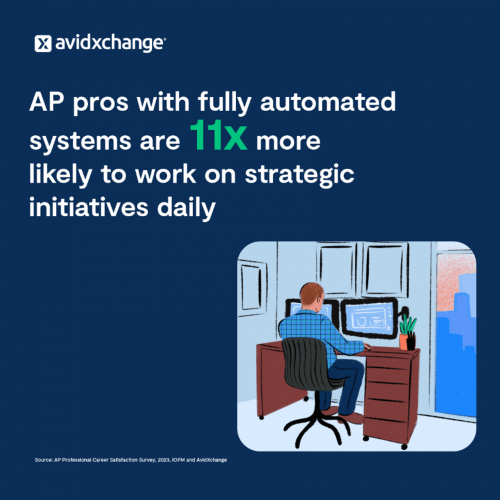The World Economic Forum confirms we are currently living in the Fourth Industrial Revolution. This signifies a time when technological advances are transforming the way we live and work, merging the physical and digital worlds.
Technology like artificial intelligence (AI), machine learning, robotics and cloud computing has impacted human life at a scale equal to steam power in the 1700s, electricity in the 1800s and computer electronics in the 1900s. In this time of profound change and economic turbulence, many businesses are turning to accelerated digitization to drive resiliency and create efficiencies.
While the impact of technology on business is widespread across industries, finance departments in particular are experiencing significant change. Increasingly, finance staff are leveraging technology to eliminate tedious manual tasks and focus on more strategic initiatives.
Finance Technology Through the Years
Over time, the technology used in finance departments hasn’t changed much. For more than a century, finance teams, including accounts payable (AP) staff, have used paper-based systems including ledgers, checks and mailed invoices. These old-fashioned methods begot errors and squandered time.
As computers became common in the workplace in the 1980s, many businesses turned to spreadsheets for financial management, budgeting and analysis. Some businesses began to transfer files and payments electronically.
As internet usage grew in the 1990s and 2000s, e-payments gained traction. Businesses could easily email documents like invoices and transfer funds online, speeding up payment processes.
The advent of cloud computing and software-as-a-service (SaaS) platforms in the 2010s brought additional progress. Cloud-based systems offered enhanced accessibility and scalability. These platforms integrated with other financial systems, such as enterprise resource planning (ERP) software, to provide a comprehensive solution for managing AP.
Now, with AI and machine learning at the forefront, finance departments are integrating new tools to automate processes, improve accuracy, reduce processing time and enrich analytics.
Automation and Digital Transformation
Earlier this year, AvidXchange conducted a survey to take the pulse of finance professionals working in middle market companies. We learned that 70% of organizations consider investing in technology as a medium to high priority this year. Most businesses realize that digitizing processes can help them cut costs and improve productivity.
One of the most popular trends in business technology today is automation. It refers to the completion of business tasks by computers with little to no human input. This helps teams work more efficiently, reducing the time spent on redundant tasks so employees can focus on more impactful work. In fact, AP pros with fully automated systems are eleven times more likely to work on strategic initiatives daily.

The goal of digital transformation initiatives is not to replace human workers with computers. Instead, digitization gives employees tools to speed up parts of their work so they can spend time on more impactful projects. The World Economic Forum estimates that by 2025, as many as 85 million jobs could be impacted by a shift in the division of labor between humans and machines. As a result, 97 million new jobs might emerge.
The current challenge in many organizations is empowering employees with the digital skills they need to use the organization’s tech tools to their full potential. The discrepancy between the skills needed to excel in the current tech revolution and those actually possessed by the existing workforce is known as the “digital skills gap.”
Bridging the Digital Skills Gap
The digital skills gap is a phenomenon impacting businesses across industries, but it is especially pronounced in finance departments. Gartner reported that in 2023, 18% of finance staff demonstrate digital competency, compared to 11% of their managers.
With unemployment at a low 3.7%, middle market companies face a labor shortage. Twenty-three percent of middle market executives told RSM it’s been “extremely challenging” to hire finance and accounting talent this year. This lack of available talent only exacerbates the digital skills gap, compelling employers to create new programs aimed at building digital skills internally.
“Upskilling” involves teaching existing employees new skills that expand their professional knowledge. Many employers are using upskilling as a tool to not only help bridge the digital skills gap but to attract and retain talent. A recent Gallup poll discovered that 69% of financial operations staff are interested in learning new skills at work, making upskilling an attractive offering.
The same Gallup poll found that 48% of American workers would switch jobs for training opportunities. And 71% of those who participated in upskilling at work said their overall job satisfaction improved as a result.
Upskilling + Digital Transformation = The Perfect Match
As businesses rush to deploy new technologies that deliver efficiencies amid the Fourth Industrial Revolution, it makes sense to introduce an upskilling program in tandem. This ensures staff can make the most of the latest digital tools and organizations maximize return on technology investments.
Today’s finance employees embrace technology and the power it brings – our recent AP Career Satisfaction Survey found that 75% of AP professionals believe technology will have a positive long-term impact on their careers. Most of the individuals surveyed said they would use automation to help them save time (85%), reduce errors (79%) and focus on more fulfilling work (65%).

As organizations adjust in this time of change and solidify their digital transformation initiatives, empowering employees with digital skills will no doubt create a competitive advantage.
Download our latest whitepaper to learn more about the benefits of automation technology and how finance departments can identify and confront the digital skills gaps that exist amongst their teams.



